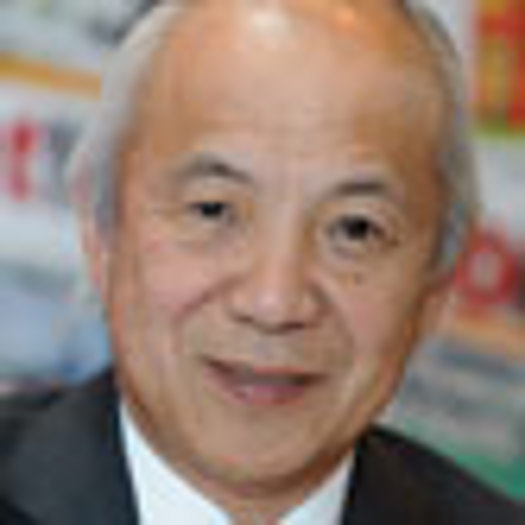Four years ago, aside from the copyshop community, Ricoh was hardly known in print. In fact, it didn't even exhibit at Ipex 2006. Fast-forward to this year's show and it has the one of the biggest stands in the NEC, thanks largely to its aggressive acquisition spree, which included IBM's InfoPrint business. Peter Williams, executive vice president production printing business group, talks about the firm's strategy and hints the rapid expansion might not be over yet.
How's the show been so far?
We're delighted. Our stand has been totally congested; I think that's a good thing. The leads we've received compared to Drupa 2008 are significantly higher, obviously we have more products here, but that's a great indicator.
Do you think that's indicative of the market?
Yes. We're seeing good growth in unit sales year-on-year and quarteron-quarter, but, more importantly than that, certainly from our customers' perspective, total document volume is showing some nice growth too, particularly colour. Demand is growing simply because budgets are finally being released.
On the InfoPrint side of the business, I understand that it will continue to be operated as a standalone business.
Yes it will, but after the joint venture has concluded, we'll be rebranding it Ricoh InfoPrint Solutions. It will still be a standalone operation, though. Our intention is to look for deals where we can utilise both Ricoh and InfoPrint assets. InfoPrint has some fantastic products for the transpromo arena, where we also have a huge amount of skills and are perhaps the market leader, and in the corporate space Ricoh already has a very strong presence and we're planning to make the most of that. The key part of that is defining how we will organise that and reinforce our joint skills, while at the same time preventing potential sales conflicts. We already have those guidelines in place and they're working. Now we're moving from a reactive position to proactive one.
Is the standalone approach a long-term plan? I only ask because, surely, there are many benefits to rolling InfoPrint into the Ricoh brand?
That was one possibility, but Ricoh has a very mature approach to acquisitions. We want to make sure we really understand the ethos of the acquisition, which is what InfoPrint will become once the joint venture is complete, so that we can optimise back office costs and while still nurturing and understanding the business. There are segments that InfoPrint serves that Ricoh doesn't. I know that we've said in the past, it will be business as usual once the transaction is complete, but what we mean by that is that the relationship will be whatever the customer wants.
So is the key opportunity, post closure, selling InfoPrint systems to Ricoh's corporate clients?
No, actually it will work both ways. Ricoh sells cut sheet, but InfoPrint has been selling Ricoh products for a while now, they have their own controllers using embedded technology so they already have a platform they can offer their client base. The practical situation we have in Europe, though, is that we're better utilising the InfoPrint resource in the continuous feed sector. Ricoh has expertise in depth in the cut sheet arena, where we're market leader in the A3/A4 segment.
You mention being market leader in cut sheet mono and number two in cut sheet colour; I assume you mean in terms of the combined MFP and production market, not just production?
Yes, it's segmented by device as opposed to market segment. It's a very narrow segment of the market that begins with the C900 upwards. That's where we're particularly strong in unit numbers, obviously we don't have the installed base yet, but we're getting there. I also look at market share based on total document volume and obviously that's significantly lower because of us being a relatively new entrant.
I know you launched your own branded web-to-print product NowPrint at the show and that's an OEM technology, isn't it?
Yes. You will see Ricoh developing its family of products, and that will include our own developed products as well as third-party products, but the common factor will have to be seamless integration and be under a single banner. We're not there yet, it's not been unveiled at Ipex, but we're nearly there.
Every company has finite funds for development and we know our strengths and more importantly we know our weaknesses. We've just announced a tieup with DirectSmile worldwide and we're bound to have more partnerships like that rolled out of the coming months and years. We already have our RDP programme that enables registered partners to access our technology and systems so that they can easily develop interfaces into our products. That's already a thriving strategy in our MFP ranges, and it will become increasingly important to our production business, too.
It appears that you've come from nowhere really since the last Ipex...
We weren't actually at the last Ipex; this is our first time here. Drupa 2008 was our first real attack on the market.
What I was going to ask was about acquisitions really - first there was InfoPrint and then there was Ikon, both massive deals, and they clearly illustrate your aggressive growth strategy. Are there any more deals on the cards?
That's an impossible question really. If there were I wouldn't tell you, if there weren't I wouldn't tell you.
Fair enough, but you entered so many areas of print so quickly that the only arenas you're not active in are wide-format and inkjet, so I didn't know if they were next on the agenda?
We are actually in the wide-format sector already, we have mono wide-format and we just announced in the US a partnership with Epson for two-colour machines. It's a genuine part of our production print portfolio and it will get bigger.
But does the inkjet market appeal, too?
We are active in the low end with the Gel Jets and, of course, we have the InfoPrint 5000. We also sell inkjet technology to third parties, so we have a lot of IP already, some of it thanks to the Hitachi purchase, and we're continuing to develop that. In fact there are a lot of our heads on products on display at Ipex.
Care to name some?
I'm not sure if that's in the public domain. But what I can say is that clearly inkjet is and will increasingly become a major contributor to our production print business. Perhaps with a technology partner or on our own. But whatever happens we'll be there and we'll be leading the way.










